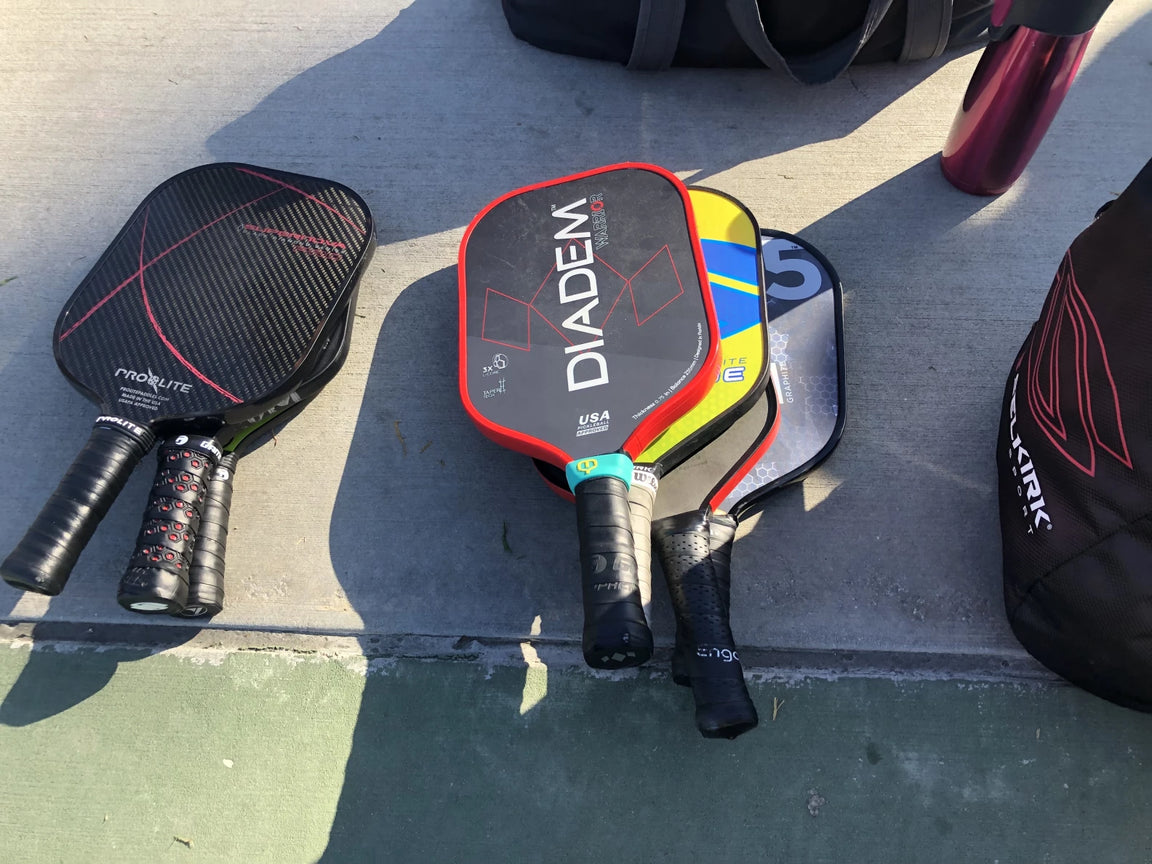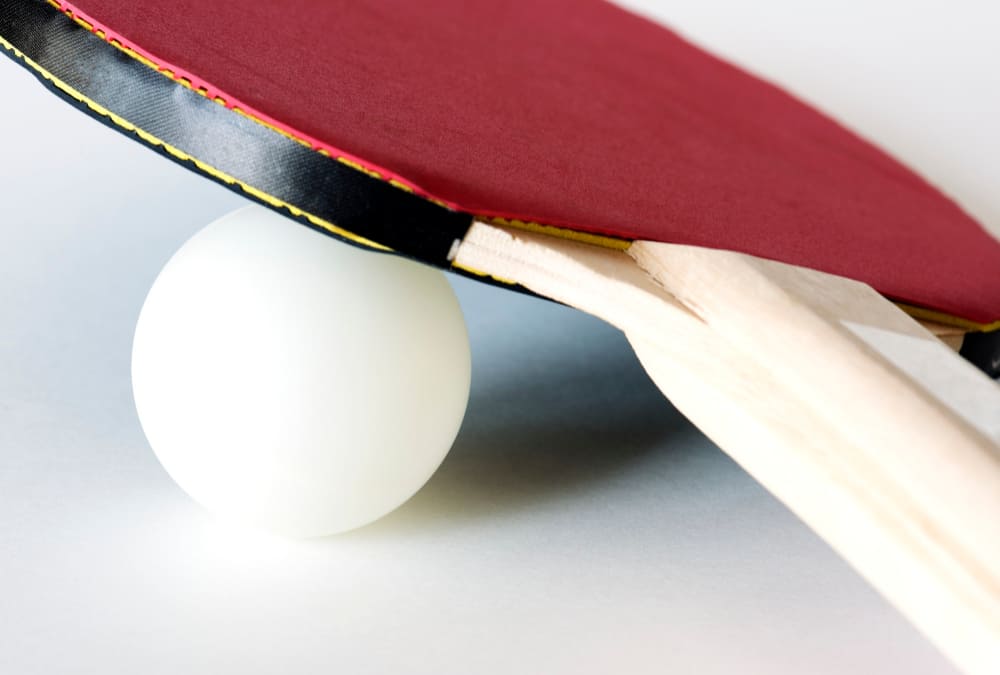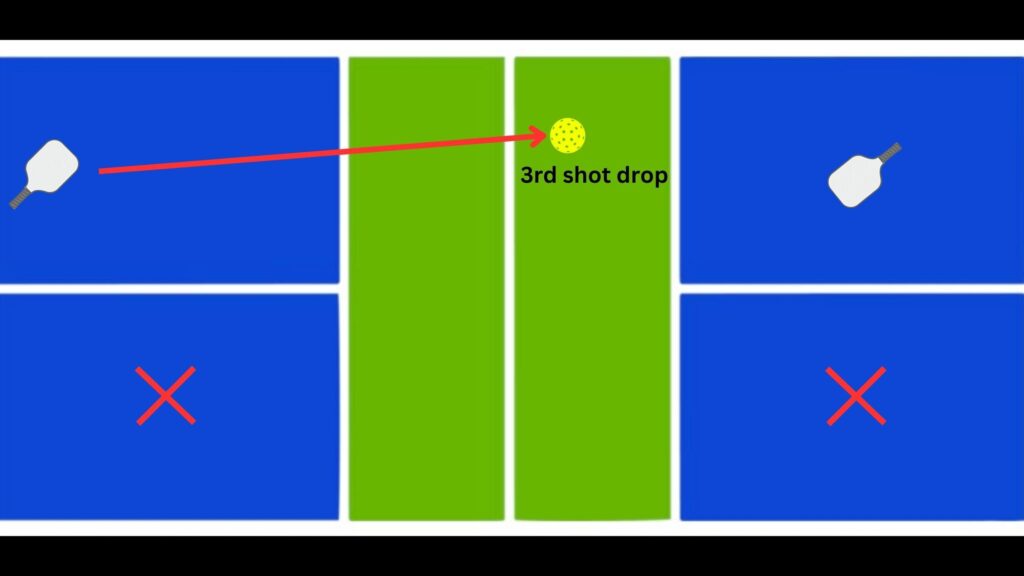To fix a pickleball paddle, sand down any rough edges and fill in cracks with epoxy or adhesive. Then apply a new grip if the current one is worn out or slipping.
Maintaining your pickleball paddle is crucial to ensuring optimal performance and durability. By following a few simple steps, you can easily fix minor damages and keep your paddle in top condition. Let’s explore some effective methods for repairing your pickleball paddle and prolonging its lifespan.
Whether you’re a beginner or a seasoned player, taking care of your equipment is essential for enjoying the game to its fullest. In the following sections, we’ll discuss various issues that may arise with your pickleball paddle and the specific steps you can take to address them.
Replacing The Grip
When it comes to fixing a pickleball paddle, one essential step is Replacing the Grip. Over time, the grip on your paddle can wear out, affecting your performance on the court. By replacing the grip, you can improve your grip strength and control during games.
Choosing A New Grip
Before replacing the grip, choose a new grip that suits your playing style. Look for a grip that provides comfort, traction, and durability. Grips come in various materials and thicknesses, so choose one that feels right in your hand.
Removing The Old Grip
Start by peeling off the old grip using a knife or razor blade. Make sure to remove any adhesive residue left on the paddle handle. Clean the handle thoroughly to ensure a smooth surface for the new grip to adhere to.
Applying The New Grip
Once the handle is clean, carefully place the new grip at one end of the handle and begin wrapping it around, ensuring there are no wrinkles or air bubbles. Secure the grip at the other end using the adhesive strip provided and trim off any excess grip material.

Credit: m.youtube.com
Fixing Surface Scratches
Learn how to fix surface scratches on your pickleball paddle with these helpful tips. From simple DIY methods to professional repairs, you’ll be back on the court in no time.
Cleaning The Paddle
Frequently clean paddle with mild soap and water. Avoid harsh chemicals to prevent damage.
Applying Epoxy Resin
- Mix epoxy resin according to manufacturer’s instructions.
- Apply thin layer over scratches using small brush or applicator.
Sanding The Surface
- Use fine-grit sandpaper to gently sand down epoxy resin layer.
- Sand in circular motion until scratches are smoothed out.
Applying A Protective Sealant
Coat paddle surface with protective sealant to prevent future scratches.
“` Fixing Surface Scratches: To maintain your pickleball paddle, follow these steps. Cleaning the Paddle: Keep it clean and avoid harsh chemicals. Applying Epoxy Resin: – Mix epoxy according to instructions. – Apply a thin layer to cover the scratches. Sanding the Surface: 1. Use fine sandpaper to smooth out scratches. 2. Sand in a circular motion until desired outcome. Applying a Protective Sealant: Seal the surface to prevent future damage.Dealing With Dents
Learn how to repair dents on your pickleball paddle with simple DIY methods. Restore your paddle’s performance and appearance with easy-to-follow tips and tricks. Enjoy an improved playing experience without spending a fortune on professional repairs.
Dents in a pickleball paddle can not only affect its performance but also give it an unsightly appearance. However, fear not! There are simple and effective ways to fix those dents and restore your paddle to its former glory. In this section, we will explore two methods to deal with dents: heating the paddle and applying pressure.
Heating The Paddle
If your pickleball paddle has a minor dent or even a small crack, heating the area can help to reshape it. Heat makes the plastic more pliable, allowing you to maneuver the dent back into its original position. To heat the paddle, follow these steps:
- Place the paddle on a heat-safe surface.
- Use a heat gun to evenly heat the dented area.
- Move the heat gun around the dent in a circular motion, keeping it a few inches away from the paddle’s surface.
- Continue heating for about 2-3 minutes or until the plastic becomes soft and flexible.
Using A Heat Gun
A heat gun is an essential tool when it comes to fixing dents in your pickleball paddle. Its high temperature allows you to soften the plastic, making it easier to reshape and remove the dent. To effectively use a heat gun, follow these steps:
- Put on protective gloves and safety goggles before starting.
- Plug in the heat gun and set it to a low temperature.
- Hold the heat gun about 6-8 inches away from the paddle’s surface.
- Moving the heat gun in a slow and steady motion, evenly heat the dented area.
- Be careful not to overheat or concentrate the heat in one spot for too long, as this can cause damage to the paddle.
Applying Pressure
In addition to heating the paddle, applying pressure to the dented area can help to reshape it. Here’s how you can do it:
- Once the plastic is softened from the heat, use your gloved hands or a flat object to push and massage the dent back into its original position.
- Apply steady and firm pressure, focusing on the center of the dent.
- Keep massaging the area until you see the dent gradually disappear or reduce significantly.
- If needed, repeat the heating and pressure process until the desired results are achieved.
Remember, it’s crucial to follow these steps carefully and exercise caution when working with heat. With the right techniques, you can fix those pesky dents in your pickleball paddle and get back on the court with confidence!

Credit: m.youtube.com
Repairing Cracks
To repair cracks on a pickleball paddle, start by cleaning the surface thoroughly. Apply a strong adhesive to seal the cracks and let it dry completely. Sand the area smooth for optimal performance when fixed.
Repairing Cracks Identifying the Crack Cracks in a pickleball paddle are a common issue that can affect its performance. To get started, identify the crack by closely examining the paddle’s surface. Look for any visible lines or gaps that may indicate a crack. It’s essential to pinpoint the exact location of the crack to properly address and repair it. Filling the Crack Once you have identified the crack, the next step is to fill it. Use a high-quality epoxy resin or pickleball paddle repair kit to carefully fill the crack. Apply the resin or filler using a small spatula or putty knife, making sure to completely fill the crack and smooth out the surface. Let the filler dry according to the manufacturer’s instructions. Sanding and Smoothing After the filler has dried, it’s time to sand and smooth the repaired area. Use fine-grit sandpaper to gently sand down the repaired area, removing any excess filler and creating a smooth surface. Be careful not to sand too aggressively, as you don’t want to damage the surrounding areas of the paddle. Repainting the Area Once the repaired area is sanded and smoothed, you can consider repainting it to seamlessly blend it with the rest of the paddle. Choose a paint that matches the color and finish of your paddle, and carefully apply a thin, even coat to the repaired area. Allow the paint to dry completely before using the paddle again. By following these steps, you can effectively repair cracks in your pickleball paddle and extend its lifespan. Regularly inspecting your paddle for cracks and addressing them promptly can help maintain its integrity and performance on the court.Preventing Future Damage
Preventing future damage to your pickleball paddle is essential for maintaining its performance and longevity. By taking proactive measures, you can ensure that your paddle remains in top condition, allowing you to enjoy the game without any interruptions. Here are some key strategies to prevent future damage:
Using A Paddle Cover
Investing in a high-quality paddle cover is an effective way to protect your paddle from dust, dirt, and scratches when it’s not in use. A cover provides a protective barrier that can prevent minor dings and abrasions, thereby extending the lifespan of your paddle.
Regular Maintenance
Implementing a consistent maintenance routine is crucial for keeping your paddle in optimal condition. This includes inspecting the paddle for any signs of wear and tear, cleaning it regularly, and storing it in a safe, dry place when not in use. Additionally, it’s important to replace the grip when it starts to show signs of wear, as a worn-out grip can affect your grip on the paddle and potentially lead to damage during play.
Avoiding Excessive Force
Applying excessive force during gameplay can put unnecessary strain on your paddle, leading to potential damage. Avoid slamming the paddle against the court or surfaces, as this can cause cracks or fractures. By using proper technique and exercising caution, you can minimize the risk of damaging your paddle and prolong its lifespan.

Credit: royalpickleball.com
Frequently Asked Questions For How To Fix A Pickleball Paddle
What Are The Common Pickleball Paddle Problems?
The most common issues include dents, cracks, and delamination of the paddle’s surface. These problems can negatively impact the paddle’s performance and durability, but they are fixable with the right techniques.
How Can I Repair A Dent In My Pickleball Paddle?
You can repair a dent in your pickleball paddle by carefully heating the affected area with a hair dryer and then using a flat surface to gently press out the dent. Make sure to apply even pressure and allow the paddle to cool before using it again.
Is It Possible To Fix A Delaminated Pickleball Paddle?
Yes, it is possible to fix a delaminated pickleball paddle using epoxy glue. Clean the delaminated area, apply the epoxy glue, and press the layers together. Allow the glue to dry completely before using the paddle again. This repair can help extend the life of your paddle.
Can I Seal Cracks On My Pickleball Paddle Myself?
Sealing cracks on your pickleball paddle is possible. Use a quality plastic adhesive to seal the crack and prevent it from spreading. Ensure the paddle is clean and dry before applying the adhesive. After sealing the crack, allow proper drying time before using the paddle again.
Conclusion
Fixing a pickleball paddle may seem like a daunting task, but with the right knowledge and tools, it can be easily accomplished. By following the steps outlined in this blog post, you can repair your paddle and extend its lifespan.
From regluing the grip to replacing worn-out parts, these simple techniques will ensure that you can continue enjoying this popular sport without any interruption. So, don’t let a damaged paddle hold you back, take action and get your game back on track.
Neil jacobson is an avid Pickleball enthusiast, writer, and coach dedicated to sharing the joy and intricacies of the sport. With 6 years of experience on the court and a passion for teaching, Courtney brings a unique perspective to his writing, offering practical insights and strategies for players of all levels. As a certified Pickleball coach, his mission is to inspire and empower individuals to excel in the game while fostering a sense of community within the Pickleball world. Through his articles, guides, and coaching sessions, Neil aims to elevate the playing experience and share the infectious enthusiasm that defines the Pickleball community.




